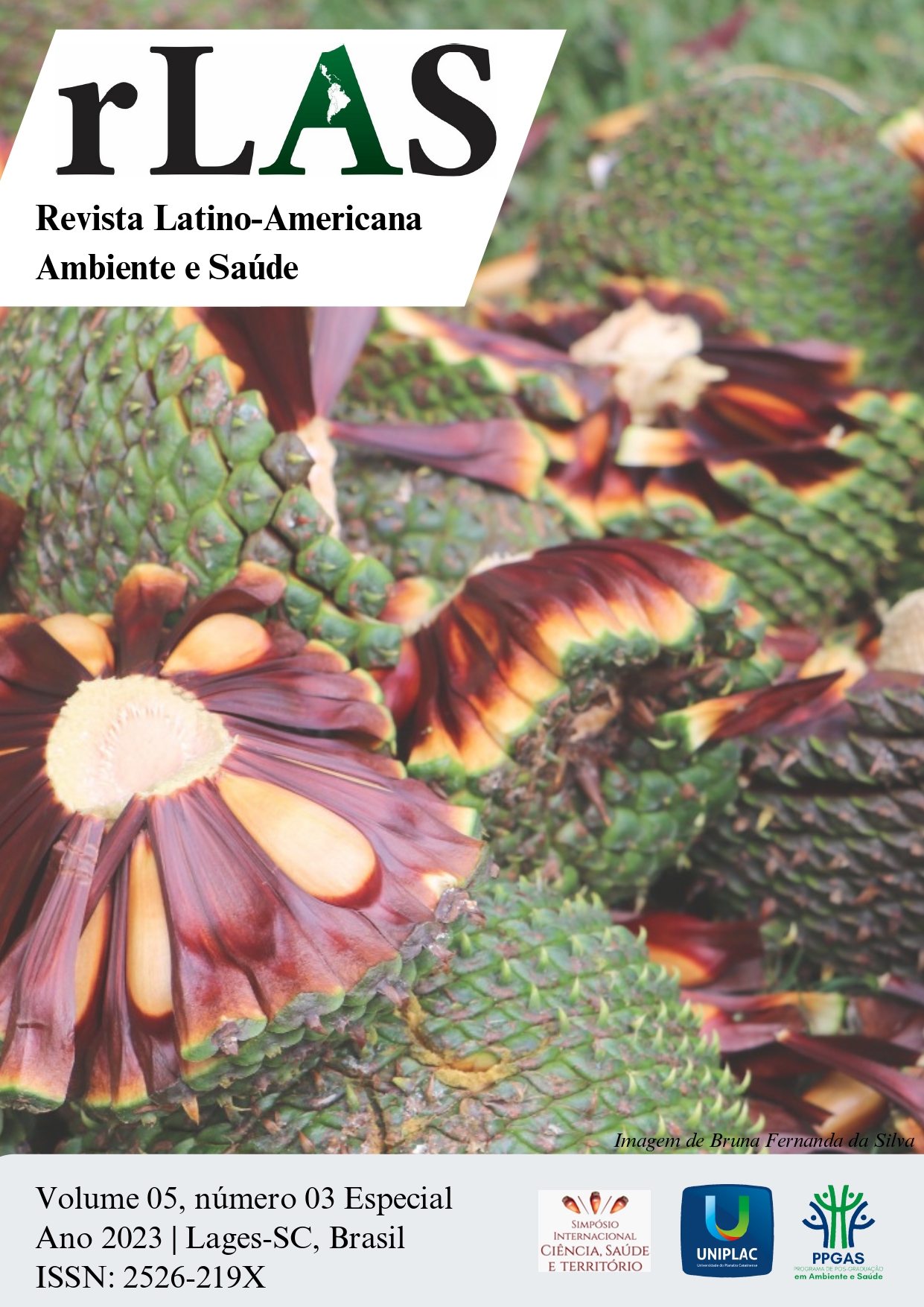Produção e caracterização de farinhas alimentícias a partir da casca e da polpa da maçã gala
Keywords:
Fibras, Alimentos saudáveis, Propriedades nutricionaisAbstract
There is a need to develop new healthy and functional foods with fibers, that are gluten-free and sustainable through the use of industry products and by-products, such as apple peel and pulp. Thus, the objective of the present study was to produce and to characterize flours from the peel and pulp of the Gala apple and list its possible applications in food. The flours were produced by sanitizing, cutting and drying the apple peel and pulp in an oven at 60°C for 48 hours. The material obtained was crushed and its physicochemical properties related to moisture, ash, proteins, lipids, fibers and carbohydrates were determined according to official methodologies. The apple pulp flour showed higher levels for moisture, ash and proteins than those obtained for the apple peel flour. The apple peel flour obtained high levels of lipids and carbohydrates, which may have been due to the influence of waxes, a glycolipid presents in the peel, which is used as a natural coating on the fruit. The flours obtained from apple peel and pulp suggest potential application in foods such as bread, cakes, biscuits, cookies, cupcakes, cereal bars, jellies, dairy drinks, among others, in order to enrich and increase the nutritional and functional properties of foods.
References
AACCI - American Association of Cereal Chemists International. Approved Methods of Analysis. 11th ed. American Association of Cereal Chemistry International, St. Paul, 2016.
AACCI. American Association of Cereal Chemists International. Approved Methods. 11th ed. St. Paul, 2000.
ANVISA. Alimentos Com Alegações de Propriedades Funcionais e ou de Saúde. 2016. Disponível em: <http://portal.anvisa.gov.br/alimentos/alegacoes>. Acesso em: 08.jul.2020.
AOAC - Association of Official Analytical Chemists. Official Methods of Analysis of Association of Official Analytical Chemists. 17 ed. Association of Official Analytical Chemists, Gaithersburg, 2016.
BRASIL. Ministério da Saúde. Agência Nacional de Vigilância Sanitária. Resolução- RDC, n° 263, de 22 de setembro de 2005. Regulamento Técnico para produtos de cereais, amidos, farinhas e farelos. Diário Oficial da República Federativa do Brasil. Brasília – DF. 22 set. 2005.
COELHO, L.M; WOSIACKI, G. Avaliação sensorial de produtos panificados com adição de farinha de bagaço de maçã. Ciência e Tecnologia de Alimentos, v.30, n.3, 2010.
FERREIRA, A. C. P.; BRAZACA, S. G. C.; ARTHUR, V. Alterações químicas e nutricionais do grão-de-bico (Cicer arietinum l.) cru irradiado e submetido à cocção. Ciência Tecnologia de Alimentos, v. 26, n.1, p.80-88, 2006.
FERREIRA, A. E. et al. Produção, caracterização e utilização da farinha de casca de jabuticaba em biscoitos tipo cookies. Alimentos e Nutrição, v. 23, n.4, p.603-607, 2012.
MARCON, M.V. et al. Pectins from apple pomace. Polímeros, v. 15, n. 2, p. 127-129, 2005.
OLIVEIRA, D. I. et al. Biscoitos tipo cookie sem glúten formulados com farelo de feijão, farinha de arroz e amido de mandioca. Revista Brasileira de Tecnologia Agroindustrial, v. 11, n. 2, p. 2502-2522, 2017.
PAREYT, B. et al. The role of sugar and fat in sugar-snap cookies: Structural and textural properties. Journal of Food Engineering, v. 90, n. 3, p. 400-408, 2009.
PROTZEK, E. C.; FREITAS, R. J. S.; WASCZYNSKJ, N. Aproveitamento do bagaço de maçã na elaboração de biscoitos ricos em fibra alimentar. Boletim do Centro de Pesquisa de Processamento de Alimentos, v. 16, n. 2, p. 263-275, 1998.


